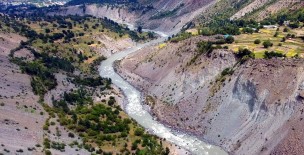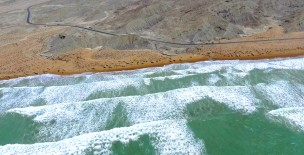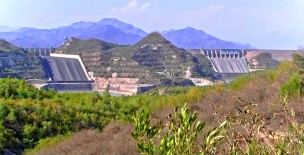The river Sindh (Indus River) (called Sindh? in Sanskrit with cognates in most Indic languages) is one of the main rivers of the Indo-Gangetic Plain in the Indian subcontinent.
This river was known to the ancient Indians in Sanskrit as Sindhu and the Persians as Hindu which was regarded by both of them as "the border river".
River Sindh flows through China (western Tibet), India, and Pakistan. The Indus is the longest river of Pakistan.
Originating in the Tibetan Plateau in the vicinity of Lake Manasarovar, the river runs a course through the Ladakh region of India[a] towards Gilgit-Baltistan.
Then it flows in a southerly direction along the entire length of Pakistan to merge into the Arabian Sea near the port city of Karachi in Sindh.
The river has a total drainage area exceeding 1,165,000 km2 (450,000 sq mi).
Its estimated annual flow is around 243 km3 (58 cu mi), twice that of the Nile and three times that of the Tigris and Euphrates rivers combined, making it one of the largest rivers in the world in terms of average annual flow.
Its left-bank tributary in Ladakh is the Zanskar River, and its left-bank tributary in the plains is the Panjnad River which itself has five major tributaries, namely the Chenab, Jhelum, Ravi, Beas, and Sutlej rivers.
Its principal right-bank tributaries are the Shyok, Gilgit, Kabul, Kurram and Gomal rivers.
Beginning in a mountain spring and fed with glaciers and rivers in the Himalayan, Karakoram and Hindu Kush ranges, the river supports the ecosystems of temperate forests, plains and arid countryside.













































